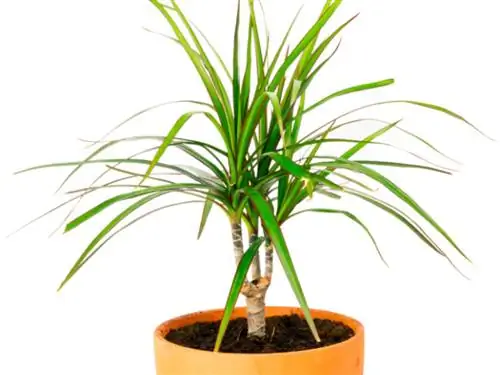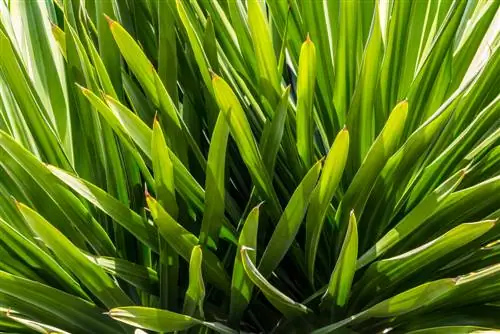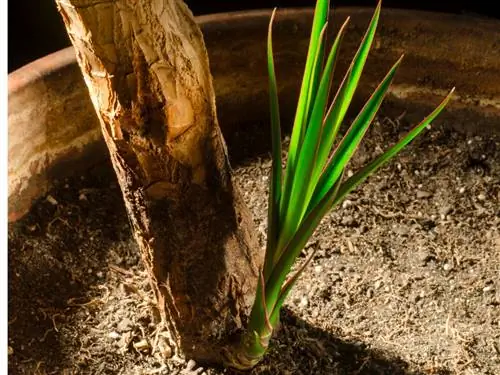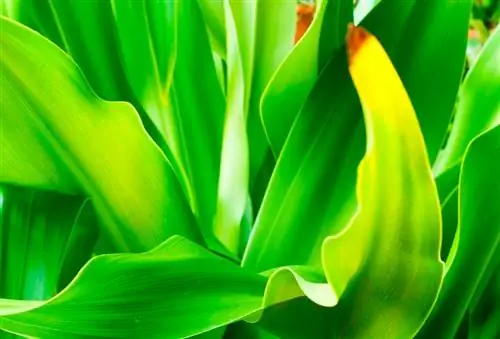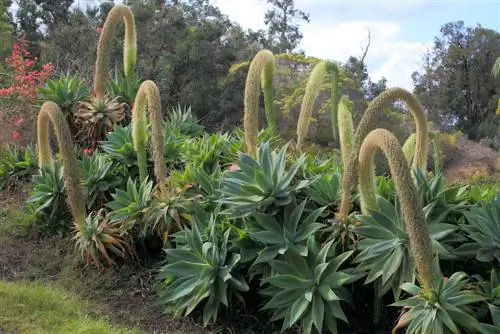- Author admin [email protected].
- Public 2023-12-16 16:46.
- Last modified 2025-01-23 11:21.
In this country, a dragon tree is usually purchased commercially as a potted houseplant with a height of around 30 to 40 cm, but can reach a considerable size over the years, depending on the subspecies. There are some good arguments against, but also for, cultivating a dragon tree as a bonsai.

Can a dragon tree be grown as a bonsai?
A dragon tree bonsai is suitable despite its long, narrow leaves, as dragon trees are adaptable and can develop into interesting miniature trees with proper care. Shortening the roots and transplanting them into a bonsai pot are crucial steps.
The classic houseplant
There are a few reasons why the dragon tree can be found in so many offices in Europe and also in many private households:
- It is evergreen if cared for properly
- It can be cultivated well in hydroponics, but also in other substrates
- Dragon trees are fairly easy to propagate
- If there are location problems, new shoots will form easily after the appropriate remedy is taken
- a dragon tree does not need direct sunlight for good growth
While some other plants, when grown indoors all year round, need temperature and care adjustments during the annual winter rest period, the dragon tree always enjoys relatively consistent temperatures between 18 and 24 degrees Celsius as well as rather high humidity.
Why a dragon tree is visually unsuitable for a typical bonsai
For the bonsai culture project, which is actually intended to last decades, plant varieties are generally selected that have particularly small leaves and flowers. This makes it much easier to create the illusion of a tree in miniature form when the trunk becomes thicker and the size is suitable for a room. With their very long, narrow leaves, dragon trees are only visually suitable as bonsai material with a lot of good will. Strictly speaking, dragon trees are not even trees. However, with their unbranched trunks, they almost look like miniature palm trees. It can therefore be appealing to cultivate a small row of “bonsai palms” in a bowl on your desk so that you can briefly dream of different places you longed for from past holidays in your everyday life.
Train your own dragon tree to become a bonsai
The practical thing about the dragon tree when it comes to trying a dragon tree bonsai: You don't necessarily have to start with a very young specimen, as is often the case with other types of bonsai. Dragon trees don't necessarily take it easy on their owners if their trunks are simply cut off at the desired height. This means you can easily trim an older dragon tree to a size suitable for bonsai. However, after shortening the roots and repotting them in a bonsai pot, you should wait a few weeks before bringing the upper part of the dragon tree to the desired size.
Tip
Dragon trees do not tolerate direct sunlight very well, unless they are of a rather red-leaved variety. Nevertheless, a dragon tree bonsai should not be too dark, otherwise it will stretch towards the light in a way that is detrimental to bonsais grows faster in height.

